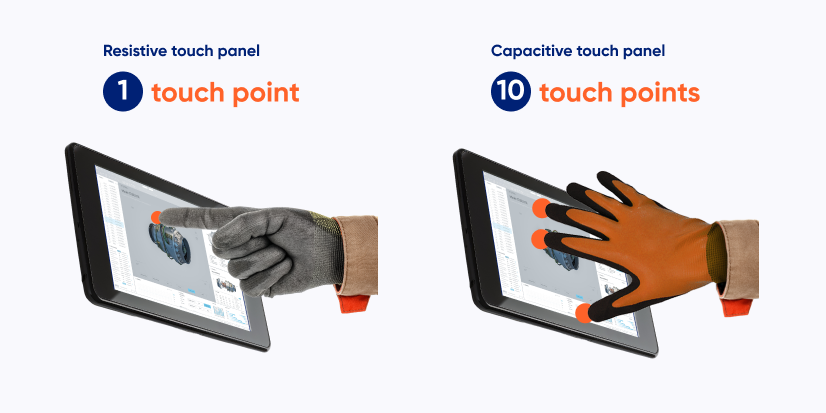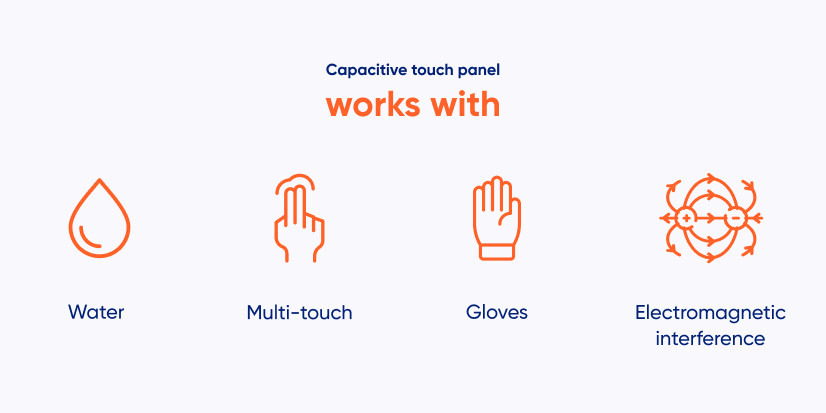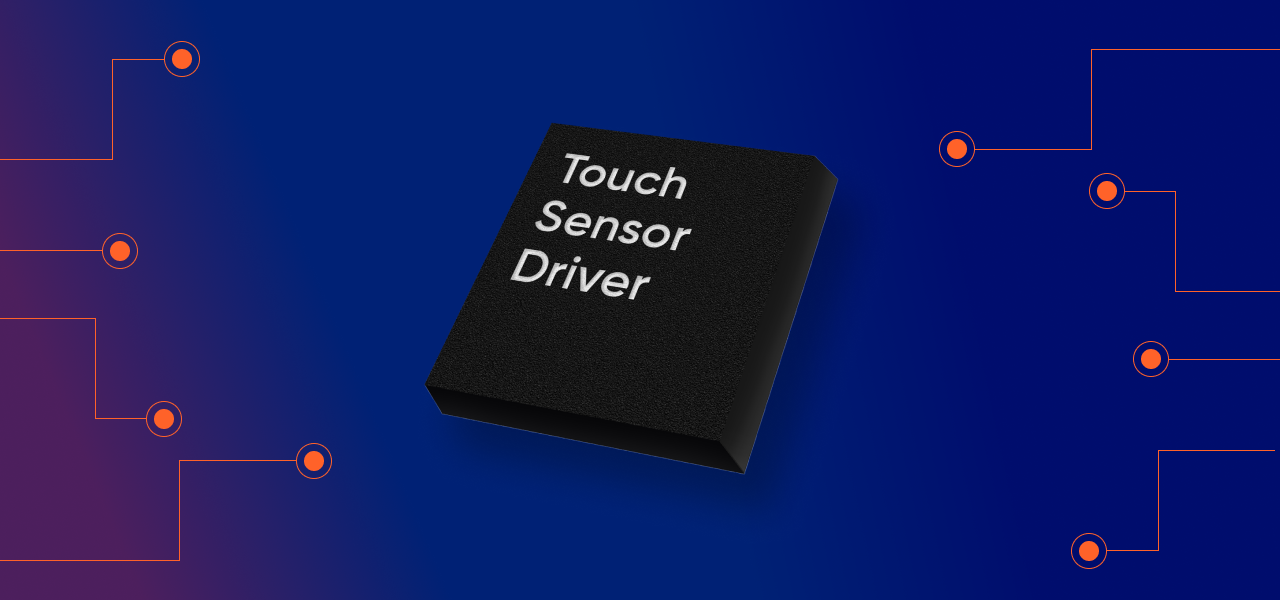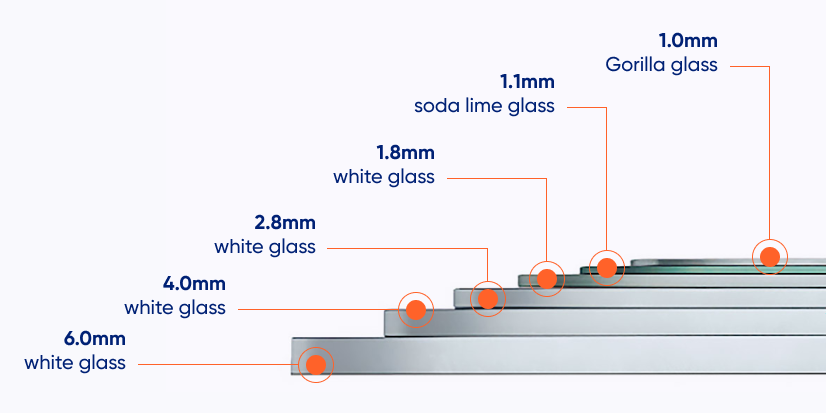Key criteria for choosing the right Touch Sensor IC
Table of Contents
PART 1.
The basics, design considerations and optimization challenges
If you are in search of the most effective way to choose a touch sensor for your projects, then you are in the right place.Â
In this article we will:
- Explain what Touch Sensor ICs are and their role in touch-enabled devicesÂ
- Describe how user environment affects touch performance
- Discuss the importance of touch performance requirements like precision and multi-touch capabilities
- Identify challenges in optimizing touch performance and learn practical tips on how to overcome them
There are nearly as many dos as don’ts in this engineering process of selecting the touch sensor. Especially when you need an industrial touchscreen for such demanding applications like medical or military.
Reading the article to find a professional framework for making more time and cost-effective decisions that work better for the end user and thus define the complete success of your project.
The importance of touch screens in user experience
A touchscreen significantly influences how a device is perceived by users. While the display’s brightness and color quality are important, the ease of operation and the solid feedback provided by a well-designed touchscreen are no less significant. A perfectly functioning touchscreen enhances the perceived value of the device, positioning it as a high-end product. Therefore, selecting the right touchscreen is crucial from the start, as neglecting this aspect can lead to numerous challenges later on.
Overview of Touchscreen Technologies
There are various touchscreen technologies available, each with its own set of characteristics. These include:
- Resistive Touchscreens
- Infrared Touchscreens
- Surface Acoustic Wave Touchscreens
- Projected Capacitive TouchscreensÂ
While the first three technologies are mostly a part of history, it is well known that projected capacitive touchscreens (PCAP or PCT) have emerged as the dominant technology, defining approximately 99% of all touchscreens manufactured worldwide. This technology is used in consumer-grade electronics such as tablets and smartphones, owing to its responsiveness and durability.
Here you will find more technical info on why our Projected Capacitive Touch Panels are far more superior than the older and seemingly cheaper resistive touch panels.

The case of industrial, medical and military applications
The general purpose of any projected capacitive touchscreen is to provide a user-friendly interface, cost effectiveness and aesthetic appeal. These features of a regular PCAP display are suitable and perfectly sufficient for consumer-grade devices. Industrial applications require more out-of-the-box thinking related to durability, precision and reliability under extreme conditions. In these sectors, selecting any touchscreen without careful consideration can lead to the final product being unable to tune properly and performing poorly.
Riverdi dedicates significant effort to designing and refining our touchscreens, focusing on sensor technology, Flexible Printed Circuit (FPC) design, firmware, and the selection of the right touch controller. Every component is precisely crafted to meet the specific needs of industrial, medical, and military applications.

Framework with key factors in selecting a touchscreen
When choosing a touchscreen, there are several environmental and operational factors to consider:

- Environmental conditions:
- Will the device be used indoors or outdoors?
- Will it need to function with a thicker glass or while wearing gloves?
- Will it need to operate in the presence of moisture or other chemical substances?
![All of Riverdi’s standard industrial touch panels come with 0.7mm or 1.1mm cover glass. Such thickness is sufficient for most applications, but when a thicker cover glass is required, we can offer a wide range of thicknesses, including Gorilla Glass. All are designed and manufactured by Riverdi and are ready to be shipped from stock.]()
All of Riverdi’s standard industrial touch panels come with 0.7mm or 1.1mm cover glass. Such thickness is sufficient for most applications, but when a thicker cover glass is required, we can offer a wide range of thicknesses, including Gorilla Glass. All are designed and manufactured by Riverdi and are ready to be shipped from stock.
- Mechanical requirements:
- The size and type of the touchscreen must align with the overall design of the device.
- What level of sealing and waterproofing is required?
- User interaction:
- Determine whether the application requires multi-touch or single-touch functionality.
- Multi-touch is essential for consumer and industrial-grade devices that utilize gestures for functions such as zooming in on photos or maps.
- Single-touch or button mode is suitable for applications like ticket or vending machines, where simple, straightforward interaction is needed.
- Capacitive touchscreens are typically recommended, but resistive touchscreens and other technologies may be used in niche applications (for example specific medical devices that require strong pressure to avoid false touches).
Importance of firmware tuning
Understanding the context and needs of the touchscreen end user is essential for optimal firmware tuning. For instance, single-touch mode is easier to manage in environments with raindrops or water, as opposed to multi-touch mode, which requires more industrial-grade controllers and tuning. Adapting the firmware to the specific interaction mode enhances the touchscreen’s performance and user experience.
Summary
Selecting the right touchscreen for your application is a multi-dimensional process that involves understanding the environmental conditions, mechanical requirements, and user interaction needs. By considering these factors from the beginning, you can ensure that your device delivers a superior user experience, meeting the high standards expected in industrial or even medical and military applications. At Riverdi, our commitment to designing and perfecting touchscreens ensures that our products are adjusted to your specific needs, providing reliable and high-quality solutions.
CHECK RIVERDI’S PRODUCTS WITH TOUCHSCREENS
Be sure to find the right industrial-grade touchscreen for your project:
- Need a plug and play HDMI interface and USB-C touch solution?
Pick the HDMI Displays that are high-resolution, high-brightness IPS TFT products with optical bonding and industrial grade touch screen as Riverdi’s standard. - Need to enhance the brightness and optical performance of your device?
Choose High Brightness IPS Displays with optical/air bonding that perfectly reduce the reflection and correct contrast. - In search of the most effective data interchange between graphics and a truly industrial touch controller?
Check BT817Q (EVE 4) product category with revolutionary communication protocol for industrial, medical and military applications requiring beautiful and sophisticated GUI - Looking for one of the highest resolution (1280×800 pixel) HMI displays based on STM32H7 MCUs?
Choose STM32 Embedded Displays with high performance enabled by STM32H757XIH6 (2MB Flash, 1MB RAM) microcontroller.
CONTACT US
Contact our expert to dive deeper into the case of Touch Sensor ICs for your project.
Having issues with your current technology? Want to learn about frameworks and our clients’ success stories? We are happy to discuss and assist you with your design and R&D challenges.
Continue to Part 2
Dt Connector,Deutsch Dt Connector Kit,Deutsch Dtm Connector,Dt Auto Connector Sample Kit
Dongguan Andu Electronic Co., Ltd. , https://www.autoido.com

